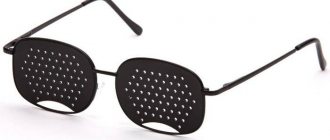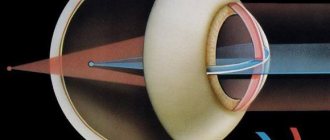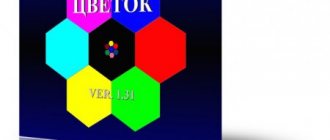Stereo pictures - what are they?
A stereo image is a flat picture in which you can see a three-dimensional image using a certain focusing of the eyes. This amazing visual effect is achieved thanks to the peculiarities of human vision.
It was discovered back in 1836. It was then that the first test stereo image appeared, which consisted of two small pictures separately for the left and right eyes. They were located 6.5 cm apart, which is equal to the average distance between two human eyes.
However, since that time, stereo imaging technologies have continuously progressed. And today, as a result, you can see the most striking example of pictures created based on the stereo effect - GIF animation. But you don’t need to strain your eyes to look at them. But in order to learn how to watch stereo images in their classic version, you need to understand the essence of their construction.
How to watch stereo images correctly
There are three ways to look at stereo images correctly: focusing from afar, constantly moving the stereo image away and bringing it closer, and focusing on the image from a close distance. It is necessary to consider each of the methods in detail.
First way
— focusing on the image from afar, that is, you need to place the stereo image at a distance of at least 25 centimeters from the eyes. After this, you need to look at the very center of the image, while your gaze should focus on one central point. Next, you should try to relax your eyes. As soon as the eyes relax, the brain begins to work, during which the image will be put together. After this, the viewer usually immediately understands what is encrypted in the stereo image. A beginner should start working with stereo images with this method, as it is considered the simplest and fastest.
Second way
— gradual zooming in and out of the picture. To begin with, the picture is placed at a distance of about 30 centimeters from the eyes. In this case, the eyes focus in the center of the picture. After this, the picture begins to be slowly zoomed in until the image is almost close to the face. Then the image must be held before the eyes until vision focuses on the central point of the picture. Next, the picture needs to be gradually moved away from the eyes so that vision begins to gradually relax. When vision is completely unfocused, the viewer will understand exactly what kind of picture was encrypted in the image. This method is also quite suitable for beginners, but it is still a little more complicated than the first.
Third way
— focusing on an image at close range. This method is the most difficult, so it is not suitable for beginners. The image is located at a distance of no more than 7 centimeters from the eyes. You need to focus your vision on the image, and then relax your eyes; this should not happen when the picture moves, but only with the help of the work of the eye muscles. Those who use this method claim that the three-dimensional image is clearer and more understandable than using the other two methods. In order to be able to defocus your vision on your own, you need some eye training.
In order to make the task easier for those looking at it, artists make two control points on the image, on which they can first focus their vision. Sometimes there is only one such point in a stereo image. Images can be viewed not only from a sheet of paper, but also from a computer monitor. However, it is best to view them on paper, since this puts less strain on the eyes. In this case, you can safely move the sheet away from you; doing this with a computer monitor will be much more difficult.
{banner_horizontalnyy2}
How it works?
A person looks at the world with two eyes. Each of them sees things and objects from their own angle. But the brain, receiving two different images, combines them into a single whole. It is this feature that underlies the creation of stereo images.
A stereo picture is an image consisting of repeating, almost identical fragments. When processing them, the brain incorrectly connects the points of gaze and the angle at which a person looks at the image. The result is a kind of optical illusion in which a flat picture turns into a 3D image.
Moreover, the faster a person learns how to view stereo images, the easier it will be for him to perceive them in the future. But to develop binary vision, constant eye training is needed.
Types of stereo images
Before answering the question of how to learn to watch stereo pictures, you need to familiarize yourself with their classification. The fact is that different images require different viewing techniques, and some even require special devices.
Types of stereo images:
- Double.
Double stereo images are the first pictures with a stereo effect. To see what's hidden on them, you just need to connect them.
- Two-color.
Such photographs are taken using various filters. The most commonly used filters are red, blue and green. To see the three-dimensional image on them, you need to wear special glasses.
- Multi-element.
Multi-element stereo images are most often used for eye training. They are represented by a flat image consisting of many small similar elements.
- Stereograms based on random dots or textures.
Unlike dual stereograms, random point stereograms consist of 1 image.
- Stereograms based on random text characters.
They can be created manually in a regular text editor or automatically in a special generator. Such images consist of common repeating text characters, such as “/”, “*”, “””, etc.
All these types belong to “true” and autostereography. However, there is also a “pseudosterocopy”, which also allows you to create the visual effect of a three-dimensional image. For example, the same GIF animation, for which you don’t need to know how to learn to watch stereo images. Since a three-dimensional image can be viewed even with monocular vision.
Simple stereo images
Answer: Flamingo
Answer: Ghost
Answer: Camel
Answer: Scorpio
Answer: Pride of Lions
Simple stereo pictures are suitable for beginners who are just learning to look at them. They are characterized by ease of image decoding. Such pictures can be viewed even by focusing at close range, as they are very simple. Even an untrained person can easily cope with a simple stereo image. If an answer is provided for the image, you can even check whether the image was solved correctly.
Features of autostereography
If a person does not know how to look at stereo pictures, he will see only a lot of unrelated elements on them. Stereo images contain only volumetric information. They do not contain the usual information about brightness and color for photographs. Therefore, the same image can be generated into different flat pictures - with different fragments, colors and contrast.
In fact, stereo images for the eyes are a signal to the brain about the need to decode the information they contain. Consequently, they can be attributed to visual information only indirectly, since without correct perception they do not carry any data. However, about 70% of people in the world can perceive three-dimensional images on a flat picture. Therefore, even those who know how to properly view stereo images for the eyes may simply not have this ability. Although, if you put in the right amount of effort, you can teach your brain to correctly convert information and see hidden patterns.
How to watch stereo images for beginners?
There are several ways for beginners to view stereo images. Moreover, the pictures for each of them are different. Therefore, if you were unable to see the hidden picture the first time, it is possible that you simply used the wrong way to view the image.
Ways to view stereo images:
- Parallel.
- Cross.
How to watch stereo images correctly? This task is easier for children. The fact is that the adult brain gets used to looking and perceiving things based on past experience. The child’s perception in this regard is more flexible. Therefore, those who viewed stereograms in childhood, after a couple of exercises, can easily repeat this in adulthood.
Parallel method
To view a hidden drawing in a parallel way, you need to take the picture in your hands (if possible) and focus your gaze not on it, but on a point located behind it. In this case, the lines of vision of different eyes should run parallel. That is, you need to try to look through the picture.
It is very difficult to look at an object in such an unusual way the first time. To “adjust” your vision, you need to defocus your gaze. Then you need to bring the picture close to your face and begin to slowly, slowly move it away. In this case, you need to try to maintain the adjusted eye focus. It will most likely take several tries to clearly see the hidden pattern.
However, there are stereo images that are convex, but how can you look at concave ones? To make something convex become concave, and vice versa, you also need to focus on a point behind the image. However, the lines of sight must intersect. To make this easier, you can imagine that you are looking at the same picture, but only from the reverse side.
P.S
Which methodology and practice to choose to develop abilities depends solely on the student. For spiritual exercises, it doesn’t matter whether you pray to the original icon or meditate on mandalas, the meaning is different.
The illusion can be moving or static. Combine viewing pictures with spiritual practices
Only a sincere desire to understand the world in all its diversity and pure spiritual thoughts will help us understand the laws of the Universe. Working on yourself, eradicating bad habits and wrong thoughts - these are the keys to opening the heavenly kingdom of Truth.
Tags: Enlightenment, Chakras
About the author: Evgeniy Tukubaev
The right words and your faith are the key to success in the perfect ritual. I will provide you with information, but its implementation directly depends on you. But don’t worry, a little practice and you will succeed!
- Related Posts
- Powerful mantras for developing intuition
- Powerful mantras to attract luck, money and wealth
- What is the Muladhara chakra responsible for and how to develop it
« Previous entry
Stereo image cross viewing method
The second way to watch stereo images for beginners is slightly different from the previous one. In it, the gaze needs to be focused not behind the image, but in front of it - at a point that is located in the middle between the picture and the eyes.
Many people consider this method more difficult, since you actually need to abstract from the stereogram and look in front of it. To do this, you need to place the picture from your face at arm's length. Then, approximately 25-30 cm from the tip of the nose, you need to place a pencil (or any other object) for focusing. In this position, you need to try to ensure that both the stereo image and the pencil are clearly visible. None of the objects should “blur”, otherwise the drawing will not be visible. If you do everything correctly, the cross-view method will teach you once and for all how to watch dual stereo images.
Ophthalmology: pros and cons
The video explains why and how optical illusions affect us:
Ophthalmologists do not consider viewing optical illusions harmful to vision. On the contrary, concentrating your gaze on objects and drawings at different distances trains the optic nerve and fundus of the eye. The main thing is not to overdo it.
It is better to print the image on paper
Medical vision testing uses similar approaches. Anyone who has passed a medical examination knows about special books with pictures, for example, tests to detect color blindness.
Excessive load on the retina should not be allowed when practicing to open the third eye. If you feel tired and cramped, finish the workout and give your body half an hour of rest.
With the help of multi-colored abstract patterns, you can change the minus to a plus, if the case is not too advanced. Daily training disciplines, develops intuition, and helps concentration.
Exercise: Place an object you like at arm's length. First, look at him for 30 seconds without looking away. Focus your gaze. Then translate to the farthest point in space. Let go of what you see, relax your eye muscles and achieve complete defocus. Objects and small details will become fuzzy and blurry. Repeat the exercise 2-3 times.
Geometric pictures can be either color or black and white
The first thing you need to learn is to develop the right view:
- Choose a picture according to your skill level.
- Bring it close to your face. The expression “read with your nose” is appropriate in this situation.
- Completely relax your gaze and try not to look sideways. At this distance, don't try to focus.
- The viewing angle is as tunnel-like as possible.
- Slowly move away from the picture or move your hand with the piece of paper further away from your face.
- If your gaze suddenly catches on any point and catches the focus, start the exercise over again.
- The distance to which the geometric pattern is removed does not exceed the length of the arms.
- As soon as the moment of truth comes and a clear picture emerges from the intricacy of colors, record it. Take your time - your intuition will tell you what to do next.
If the training didn’t work out the first time, don’t be upset, try another pattern. Two or three days - and you will achieve the desired results; rarely does anyone take longer to achieve insight. The more experience, the faster the encrypted objects appear.
Other ways to view stereo images
The following methods are also divided into parallel and cross-view groups. Some of them will be useful to those who are looking for how to watch stereo pictures on a computer, others will be useful to those who could not achieve good results even with the classic version of stereograms.
Parallel viewing technique:
- Print and place the picture at a distance of 20-25 cm from the wall or other flat, flat surface. Move the same distance away from her. Now you need to focus your gaze on the wall behind the picture.
- Take transparent glass or cellophane (film). Place it on a stereo image and concentrate your gaze on the objects that are reflected in it.
- Bring the picture as close to your face as possible. Fix your gaze. After this, slowly move the image to a distance of 20-25 cm from the face, without changing the focus point.
Cross View Technique:
- Place the tip of a pen or pencil between the monitor screen and your face. You need to focus your gaze on it, but you must not lose the sharpness of the stereo image.
- You need to draw a dot on a piece of film, glass or transparent plastic and place it between the stereo image and the face. The distance from the stereogram to the face is 50-60 cm, from the face to the film – 25-30 cm. The point should be located exactly in the center, since the eye should focus on it.
Images of the All-Seeing Eye
It is advisable to listen to binaural beats for opening the Third Eye with headphones:
The most accessible way is concentration at a specific point. Esotericists recommend using the so-called mark. All-Seeing Eye. It can be purely schematic or woven into a fancy geometric motif. In some practices, it is recommended to draw a symbolic eye on the palm and meditate while looking at the hand. Women draw the Eye on their left hand, men - on their right hand.
The term All-Seeing Eye is present in the culture of many peoples of the world
You can meditate using mantras and special music. This will adjust the body to the correct vibrations. Do not forget that the opening of the Third Eye is preceded by work with other active points. The 6th and 7th chakras are a ticket to higher spheres, but if the body’s energy is filled with negativity, then no amount of exercise will help.
An example of what the picture might look like. It doesn't have to be colored. Peer at the center of the picture, rotate the rays or stop them.
How accurate the image will be depends on the wishes of the student, knowledge of the occult sciences and the degree of general Enlightenment.
In Hinduism
The Third Eye is depicted schematically and in a vertical position. Often dotted with three lines. Marked on the forehead by a small reddish dot. In the space between the eyebrows of Shiva it is a Flaming Pearl. If desired, the esotericist takes as a basis the image of any deity from the pantheon of Indian gods.
Egyptian mythology
The ancient Egyptians called the symbol the Eye of Horus or the god Ra. It is both an amulet for protection and a sign of eternal life. The Eye of the deity Horus represents the quintessence of the Cosmos, Consciousness, Reason and mystical power. Usually the pictures contain an eyebrow line, which is associated with strength.
Notice how expressive the eyes and brow ridges of the Egyptians are in ancient frescoes. The beautiful and feminine Queen Nefertiti is depicted with luxurious eyebrows.
A twisted spiral is traditionally depicted under the lower eyelid - the personification of the eternal cycle of energy, withering and resurrection. The Egyptians associated the variability and inconstancy of nature with the Moon, and were the first to find out the influence of the night star on the processes occurring on Earth. In their minds, the magic sign is associated with this planet.
Masonic signs
Radiant Delta is the name of the Third Eye in the occult terminology of the Order of Freemasons. In the 18th century, the magic triangle became widespread in the United States. Today we see it on dollar bills.
Classic image of a Masonic symbol
The symbol was also present on banknotes in Tsarist Russia. In the occult tradition, he is considered the patron of prosperity and wealth, and is used as an amulet for those wishing to achieve success in the financial field.
Practice
Having chosen a pattern to your liking, try to create a functioning powerful yantra yourself. For this:
- Draw the symbol in the center of your palm.
- Sit in Padmasana pose.
- Raise your hand at forehead level, where the third eye is.
- Chant the mantra OM, breathe freely, easily and rhythmically, without stuttering or holding in the air.
Repeat the mantra from the video an unlimited number of times, and it will bring unimaginable benefits and strength:
As you exhale, imagine how an invisible stream is directed into the picture. As you inhale, the opposite should happen. Close your eyes. In your mind's eye, imagine the pattern on your palm.
Conduct meditation morning and evening, each time complicating the task: direct the energy around your hand, twist it into a spiral. Imagine how bright light envelops your body and consciousness.
Eye training exercise
Stereo images are unusual for the eyes, so some people are unable to see a three-dimensional image without training. To practice, you need to take a mirror. When looking at your reflection, you need to look into your own eyes. After 10-15 seconds, you need to smoothly move your gaze to the mirror. This exercise must be repeated several times.
After a series of repetitions, it will become clear that the mirror acts as a stereo image, and the reflection is exactly the point on which you need to focus your gaze for parallel viewing. With a cross, the opposite will happen. The mirror is the focusing point, the reflection is the stereo image.
Turn on anti-stress mode (gifs)
Sleeping cat
Morning cup of coffee
Flying above the clouds
sleeping owl
Calm among the mountains
A slight breath of wind
Now look at this fascinating natural symmetry.
The benefits of stereo images
If we ignore the fact that viewing stereograms is interesting and exciting, you can find a few more useful facts about this activity. For example:
- Eye training to help maintain visual acuity.
- Positive effect on blood circulation.
- Relieving eye muscle tension.
- Improving the functioning of the accommodation apparatus.
If there are disturbances in the functioning of the visual system (myopia, astigmatism, etc.), ophthalmologists highly recommend using stereo images to exercise the eyes. In addition, this will be useful for those people who spend a lot of time looking at the monitor screen.
Is there any harm from stereo images?
Some people believe that viewing stereo images creates enormous strain on the eyes. However, it is not. On the contrary, with a constant change of focus, the eye muscles seem to train, relieving accumulated tension.
The harm associated with viewing stereo images can only be done if viewed on an old-fashioned cathode ray tube monitor. Their harmfulness has long been proven, so it is better to get rid of such equipment altogether. But printed stereo images will only bring benefits. On the contrary, it is worth stocking up on them in order not only to have fun, but also to prevent visual impairment.











